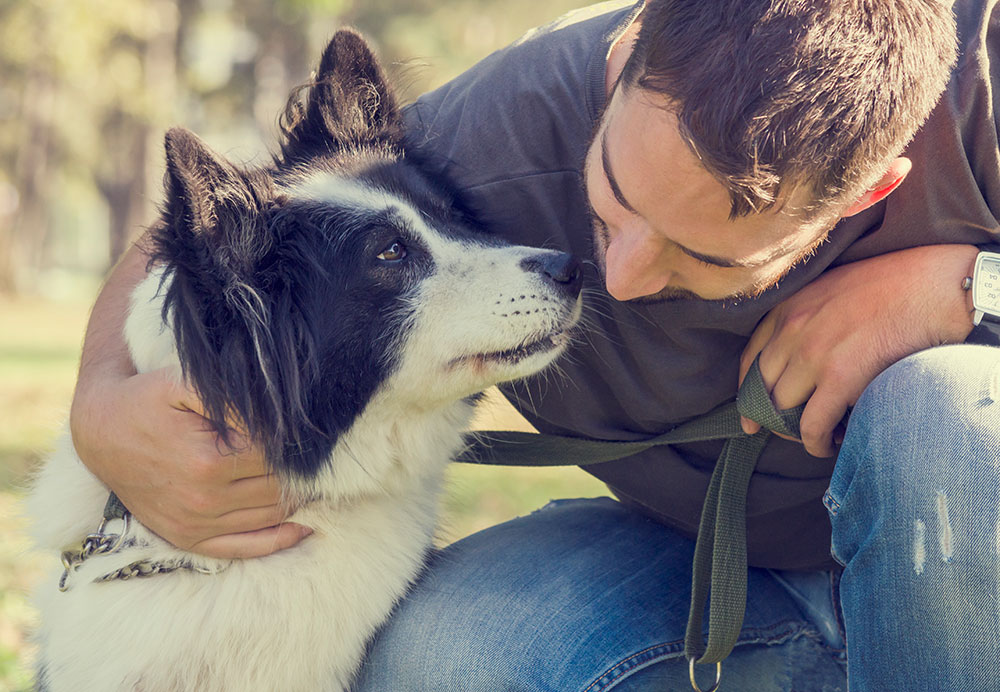
We live in times where people are obsessed with their pets, dogs in particular (in a good way, of course!) People love to talk about them, post their pictures on social media, have special doggie treats made, take them to the spa, or even host lavish parties for them.
But owning a dog means training it. After all, every pet owner wants a happy, well-behaved dog he can flaunt. As the demand for dog training has increased over the past 2 years, so has the number of dog training blogs.
Blogs provide a wealth of information on different types of dog training. They also present opportunities to find relevant information, share personal stories, ask questions, or host social events. But with so much information around, who do you trust? Fret not. Read on.
The rise of dog trainers
The lockdown gave many people an opportunity to bring home pups, commonly referred to as 'Pandemic Pups'. For some, working from home meant more time on their hands and a pet was a useful way of filling the void and, in addition, gave them some mental respite during those challenging times.
But the downside is that it has affected the well-being of pups. Pups missed socialising during this period because they were mainly accustomed to staying indoors or not being exposed to visitors.
Reportedly, pups who grow up indoors lack the necessary stimuli during their critical developmental period.
Concerns grew among pet parents when many of these dogs didn't know how to respond to new situations or other dogs. Some dogs were perfectly well-behaved indoors with their owners, but would be aggressive with other dogs or people. So, stepping out with them was becoming a tedious task.
Apprehensive pet parents have now resorted to hiring dog trainers and behaviourists to keep their dog's demeanour in check.

Why is dog training necessary?
Until recently, people believed that dog training was meant only to teach cool tricks. It was a luxury for some dog owners. Now, things are changing and people realise that it can't always be done independently. Most of the time, the assistance of experts with the necessary knowledge is required.
Training a dog not only builds its confidence but enhances your bond with your pet. A positive training method produces a more patient, self-reliant dog that behaves consistently well in various situations. So, whether a dog is a pandemic pup or not, training is critical as all dogs are curious creatures who are constantly learning.
We have curated a list of seven of the best dog training blogs (in no particular order!) out there which you can refer to for all your dog training info. So, whether you are a concerned dog owner or a wannabe dog trainer, this is for you.

Cesar's Way
Cesar Millan is a renowned Dog behaviourist with more than 25 years experience in canine training under his belt. He is also a TV personality and the New York Times best-selling author of several books on dogs. More than one hundred countries worldwide have broadcast his television series Dog Whisperer with Cesar Millan, making him a household name.
His blog CesarWay offers free content from dog psychology and care to adoption tips and information on specific dog breeds. His website advises on interacting with your dog effectively and reading your dog better. He offers insights into recognising a dog's instincts, body language, and energy patterns. This hands-on training course is ideal for dog owners and trainers alike.
So, if you are just starting out as a dog trainer, this is an excellent place to gain expertise.
Dog Training Revolution
Zak George is a trusted name when it comes to dog training. His large following of over 3.5 million subscribers on YouTube and 464K followers on Instagram is testimony to the fact that Zak is highly regarded as an influential dog trainer. He has also starred in dog training shows; Animal Planet's Show, SuperFetch and the BBC's Who Let the Dogs Out. He has also featured in some famous talk shows.
His methods steer clear of the cookie-cutter approach that is often followed in this industry and he believes that people must cater to each dog's unique personality and needs. His training videos and techniques advocate the latest in scientific research.
He has a number of how-to tutorials, puppy survival guides and videos on dealing with hard-to-control behaviour, among many others. His teaching techniques will offer a fresh perspective for those seeking to master the art of dog training.
That Mutt
That Mutt is Lindsay Stordahl's blog that started in 2008. This blog is regularly updated and dedicates its space to puppy training, general dog training tips, and an ideal diet for dogs.
You will find answers to some common questions about dogs’ behavior, such as pulling on the leash, barking and lunging at other dogs, kennel training, and so on. They have a weekly newsletter subscription service, choc-a-bloc with easy-to-understand and practical information.
The Journey Dog Training Blog
Kayla Fratt is the head behaviour consultant, founder and certified trainer who has been training dogs for a living since 2012. Her website includes a multitude of resources such as podcasts, training videos, eBooks and courses.
Her blog is constantly updated with new and relevant content covering various topics, from aggression and separation anxiety to phobias and potty training. They even have a shop to purchase online training plans, Skype sessions, and personalised training plans.
The Modern Dog Trainer
The Modern Dog Trainer blog is aimed at helping people create a profitable dog training business. Their blog has tons of articles under various sub-categories focusing on training, growing your dog training business, marketing tips, research, podcasts and a host of valuable training tips.
This blog is a one-stop shop for all things related to dog training and for those who need a specialised programme on how to turn their passion for dog training into a commercial enterprise.
Good Human Dog Training
Jennifer Thornburg, the owner of Good Human Dog Training, has been involved in the industry for more than 16 years. This alumni from Karen Pryor Academy started this service to provide effective and humane teaching methods involving training dogs without inducing fear, pain or discomfort.
Her blog is inundated with articles on leash manners, body language, recognising specific behaviours and dealing with them appropriately. They even offer an online course on dog training.
Peach on a Leash
Owned by head trainer and pet behavior expert Alex Sessa, Peach on a Leash is run by a certified team of trainers and dog lovers. Apart from dog training services, online training and group classes, they also have a blog that offers a plethora of information on how to understand your dog's behavioural responses and teach them critical skills like refraining from jumping up and constant barking.
Here are some frequently asked questions related to dog training:
- Know your dog - Observe your dog, and understand his temperament and personality. You should evaluate your dog's social skills, obedience training potential, response to change and curiosity level.
- Ensure predictability- Setting your dog up for success is crucial in training. Predictability is essential while training a dog to get the desired results. For example, do not expect a dog to comply with a request while it is distracted. Understand that training is based on trial and error. Look for clues in problems to find appropriate solutions.
- Be consistent - Consistency is vital while training a dog. Always stick to consistent routines, commands and cues otherwise you will end up confusing your dog thus making the training ineffective.
- Avoid punishment- Always bear in mind that you should tailor the training to your dog's pace. An overwhelmed dog is hard to train so know when to call it a day. Dogs have a short attention span; if you push them beyond it, your dog may stop being receptive to your commands. This can often frustrate the owner, leading them to use punishment which can drive the friendliest dogs to become aggressive, something no dog owner/trainer wants. Instead, use positive reinforcement to instil good behaviour.
- Allow the dog to choose - Now, this might come as a surprise to some. All behavior is conditional. To expect a change, we must create the right environment to facilitate that behavior. Dogs feel calmer, more confident and comforted when they have choices in their environment. It also makes it easier for you to teach your dog new skills. Ultimately, what gets rewarded gets repeated.
What are the 3 Ds in dog training?
A dog's training should be based on the three Ds:
- Distraction - Your dog's ability to deal with ongoing distractions.
- Distance - The farthest your dog can be from you without breaking cues.
- Duration - The length of time your dog can maintain the signal.
So, if you're teaching your dog to sit, start with him being close to you for a brief time and practise at a time and place with few distractions.
What are the 7 commands to train a dog?
A trained dog should be able to follow these 7 commands: Sit, Stay, Come, Down, Heel, Off, and No.
Check out our dog trainer insurance policies if you're a dog trainer or considering becoming one.
Related Articles

Dog Training Marketing - Advertising Tips (2022)
Marketing is one the most important things you can do as a dog trainer. Read on for ten easy tips on how to market yourself easily and effectively. READ MORE...

How to Become a Dog Trainer | Certified
Wondering how to become a dog trainer? Would you like to be certified? READ our comprehensive guide to find out more...